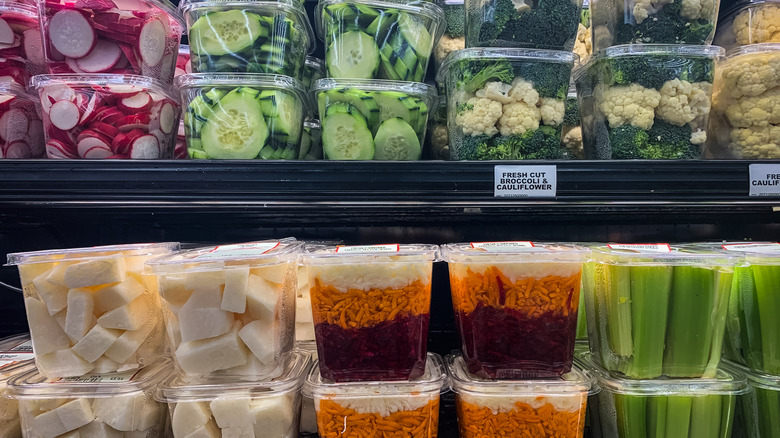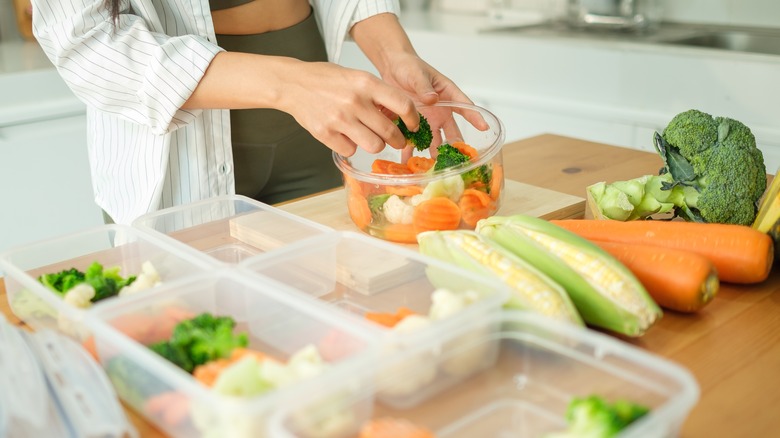Save Big Money On Produce With This Easy Grocery Shopping Tip
The folks who operate grocery stores have figured out what people want most: convenience. Though there are numerous proven benefits for families who frequently eat dinner together at home, many simply struggle with finding the time, between work, school, and extracurriculars. That explains why about two-thirds (66%) of Americans are turning to pre-portioned ingredients to ensure they can still eat healthy, and 42% of parents are focused on buying snacks and school meal options for kids that save time (via the National Frozen & Refrigerated Foods Association).
Pre-cut produce, like deboned and pre-cut meats, is a convenient way to both save time and eat healthy. But it won't do your wallet any favors. The time you save at home means you must pay for the time and labor of workers, usually at stores themselves, to pre-cut and pre-sort produce, not to mention the cost of packaging. That cost is passed along to you, the consumer. That's why one of our best tips for saving money at the grocery store is to step away from the pre-cut produce and do your own cutting at home with whole fruits and vegetables.
The drawbacks of pre-cut produce
Of course, pre-made fruit cups, individual celery stick bags, and pre-peeled garlic certainly shave time off food prep at home. But you pay for that convenience at the register. With pre-cut produce, you're paying for the employees to take time chopping, portioning, and packing the fruits and veggies into containers. Plus, you pay for the packaging. For example, at the time of this writing, a two-pound bag of whole Honeycrisp apples at Safeway costs $5.99. For that same amount of money, you only get one pound of apple slices in a plastic bowl — that's half the amount for twice the price! And although it's appealing to skip the grating process for your carrots by buying a 10-ounce bag of pre-shredded carrots at Walmart, that bag costs $1.87, while you can get an entire pound of whole carrots for under $1. You can even pre-cut them at home, portioning them into airtight containers or Ziploc bags, for convenience later on, so you save money and time when you need it.
Not only is it more costly to buy pre-cut produce, but the extra packaging is bad for the environment, increases the chances of the produce getting bruised or damaged in the package, speeds the amount of time it takes for the items to spoil, makes it impossible for you to know how ripe (or overripe) the produce is, and increases the chances of contamination from illness-causing bacteria. While the convenience of pre-cut produce has its place — when you're ready to eat the items immediately and only have a short window of time to purchase and eat them — the best way to save money, while helping the environment and your health, is to stick to whole fruits and veggies and cut them at home.

